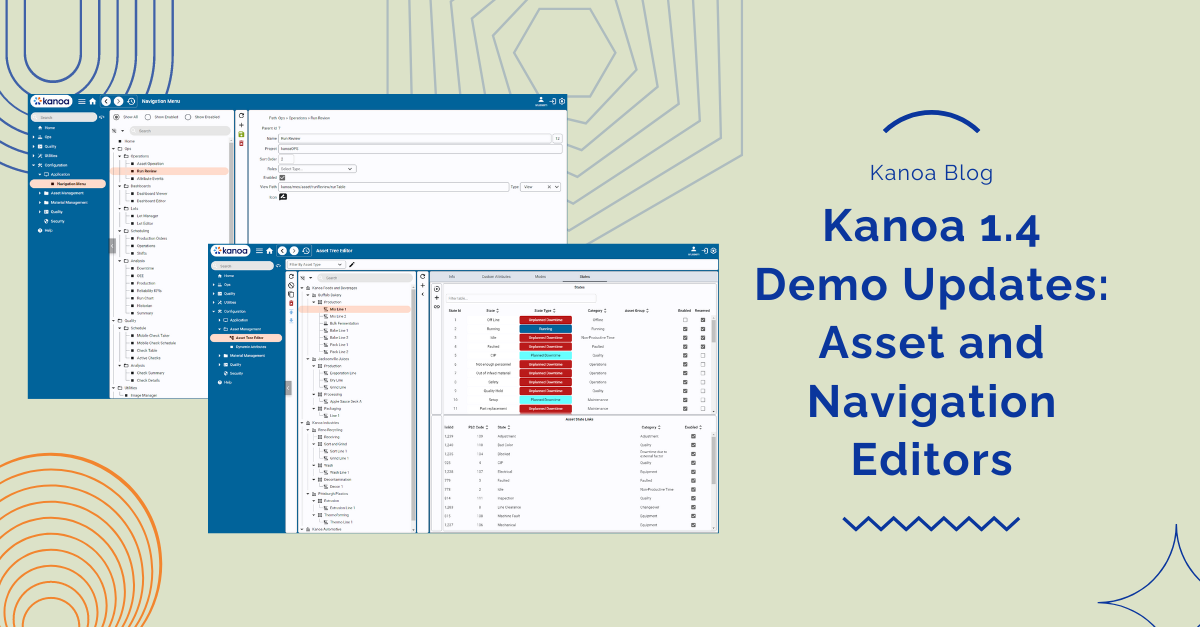3 Pro Tips for a Successful Kanoa MES Deployment
Deploying Kanoa MES is a big step toward digital transformation and operational efficiency in your manufacturing environment. A well-planned implementation ensures smoother operations, better data management, and scalability across multiple sites. To help you make the most of your Kanoa MES deployment, here are three pro tips that will set you up for success.
Tip 1: Use UTC for Your Database Timezone
Timezones are always a challenge in multi-site industrial applications. If your organization is planning to implement Kanoa MES across multiple locations with different time zones, we strongly recommend setting your database server to Coordinated Universal Time (UTC).
Why Use UTC?
- Consistency Across Time Zones: UTC ensures that all timestamps are stored in a standard format, eliminating confusion when accessing data from different locations.
- Simplifies Daylight Savings Adjustments: Many regions observe daylight savings time, which can create gaps or overlaps in data when clocks shift forward or backward. Using UTC prevents these issues.
- Prevents Client vs. Server Discrepancies: When your management team needs to review data from a plant in another time zone, they won't need to worry about misaligned timestamps or errors caused by local system settings.
- Future-Proofing: UTC-based databases provide long-term scalability, reducing the likelihood of time-related errors as your operations expand.
Kanoa MES is designed to accommodate various time settings (especially when integrating with pre-existing databases), but if you have the option to choose: pick UTC. It will save you time and headaches down the road.
Tip 2: Consider Using MQTT for Data Communications and Redundancy
Two powerful recommendations in one: leverage MQTT as your primary data communication protocol, and use it as a redundancy solution! MQTT is or should be the backbone of any digital transformation.
Why MQTT?
- Cost-Effective Data Transfer: MQTT is lightweight and designed for efficient data communication, making it ideal for real-time industrial data collection.
- Designed for Low Bandwidth Networks: Unlike traditional polling methods, MQTT uses event-driven updates to minimize network traffic, ensuring your existing network can handle increasing data loads without requiring an upgrade.
- Supports Unified Namespace (UNS): If your organization is moving toward an enterprise-wide Unified Namespace (UNS) strategy, MQTT provides a flexible and scalable way to standardize and share data.
- Seamless Integration with Kanoa MES and Other Systems: With MQTT, data can be easily transmitted to Kanoa MES while also being available for other enterprise applications such as analytics, dashboards, and AI-driven insights.
Using MQTT for Redundancy
A common question we get from customers is: “How do we build redundancy into our system?” Redundancy can quickly become complex and expensive if you try to duplicate every potential point of failure in your system architecture. This is where MQTT’s store-and-forward capabilities shine.
- Data Buffering During Outages: If there is a temporary network disruption or a server failure, MQTT-enabled devices can store data locally and forward it when the connection is restored.
- Reduces the Need for Expensive Redundant Systems: Instead of doubling up on every piece of infrastructure, MQTT provides a cost-effective way to ensure that no critical data is lost due to brief outages.
- Supports Security: TLS encryption ensures that data transmitted between MQTT clients and brokers is secure, preventing attackers from intercepting and deciphering sensitive information even if they gain access to the network.
By using MQTT, you enhance your system’s resilience and redundancy while keeping costs under control.
Tip 3: Plan for a DEV/TEST/PROD Environment and Deployment Strategy
Many customers begin their Kanoa MES journey with a single server for proof-of-concept (POC), development, testing, and pilot deployment. While this is a great way to get started, it becomes risky as Kanoa MES becomes a core part of your operations.
Why You Need a DEV/TEST/PROD Strategy
- Avoid Disrupting Production: As Kanoa MES becomes integral to your production environment, any untested changes or new features could cause disruptions.
- Facilitates Safe Development: Running a separate Development (DEV) environment allows engineers and developers to build and refine features without affecting real production data.
- Enables Thorough Testing: A Test (TEST) environment lets you validate configurations and workflows before deploying to production.
- Ensures a Reliable Production (PROD) System: Changes should only go live in Production (PROD) after thorough testing, ensuring system stability and reliability.
- Simplifies Deployment with Containerization: We use containerization in our own DEV-TEST-PROD environments, which streamlines the deployment process and ensures consistency across environments. Containers also help reduce dependencies and simplify scaling, making the entire process more efficient.
To make this best practice easier for our customers, Kanoa offers significant rebates—currently 50% off at the time of this writing—on non-production licenses that support a Production license. This makes it more affordable to maintain proper development and testing environments while ensuring a smooth deployment process. Additionally, using containers along with our reduced rate further simplifies the entire process, making it easier for manufacturers to implement and manage Kanoa MES efficiently.
Conclusion
Deploying Kanoa MES is a significant step toward operational excellence, and these three pro tips will help you maximize its impact:
- Use UTC for database time settings to maintain consistency across sites.
- Leverage MQTT for data communications and redundancy to improve efficiency and system resilience.
- Implement a DEV/TEST/PROD strategy to ensure smooth, error-free deployments.
By following these best practices, you’ll set yourself up for a scalable, reliable, and future-proof Kanoa MES implementation. Ready to take the next step?
Contact us today to learn more about how Kanoa MES can transform your manufacturing operations!
You May Also Like
These Related Stories

Kanoa is on YouTube
-1.png)
From Trial to Transformation: Build Your Own Kanoa MES Demo in Minutes


No Comments Yet
Let us know what you think